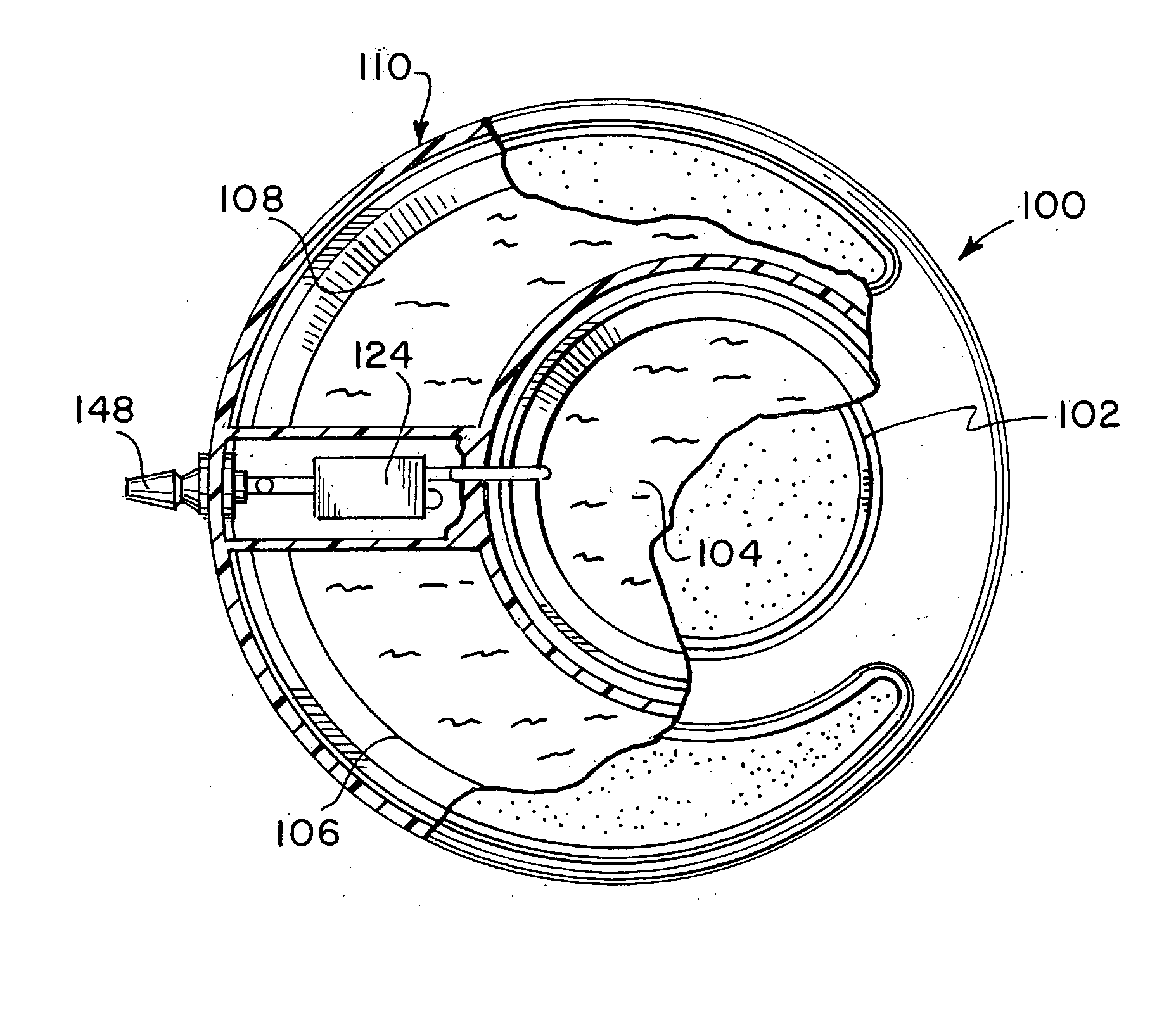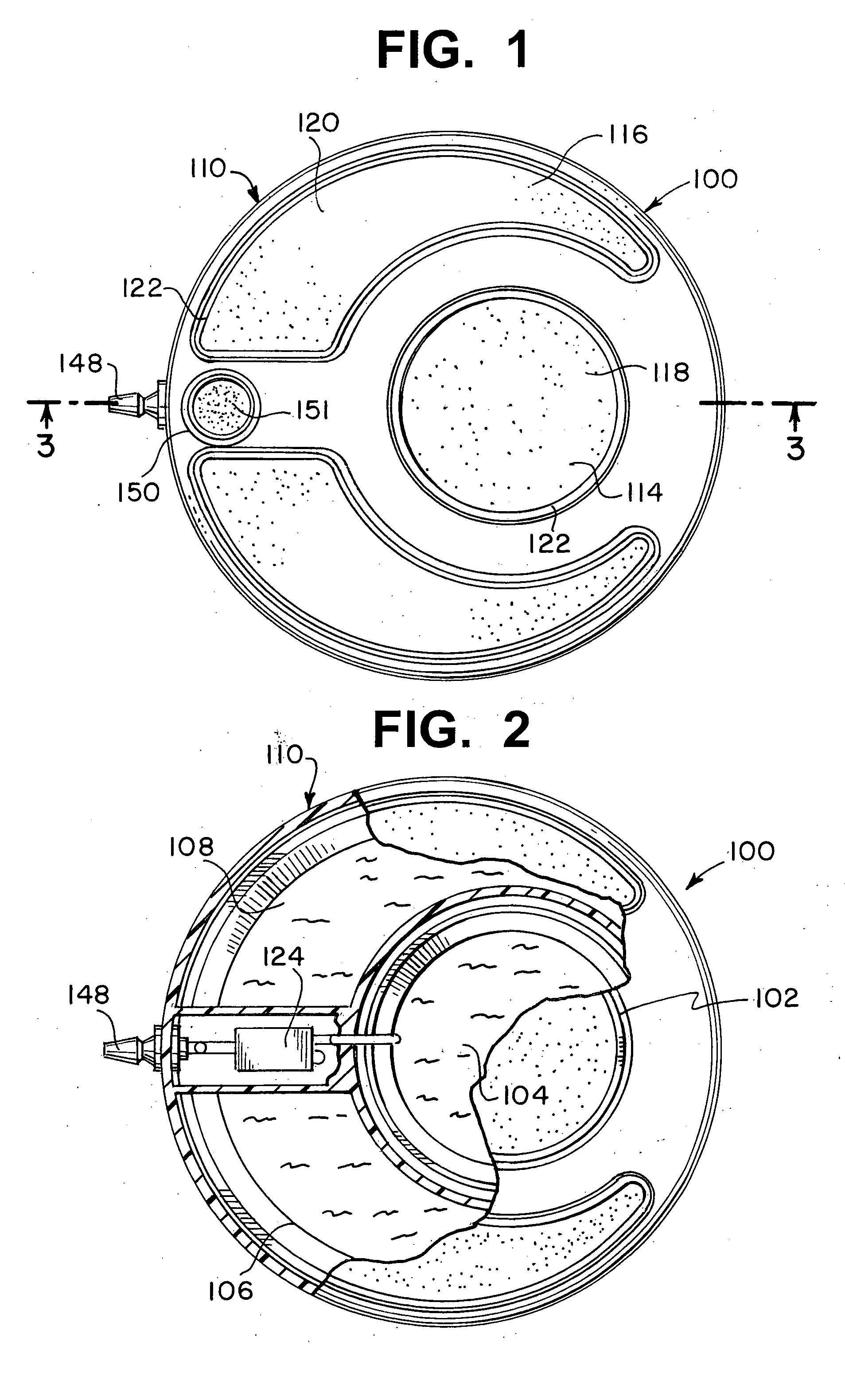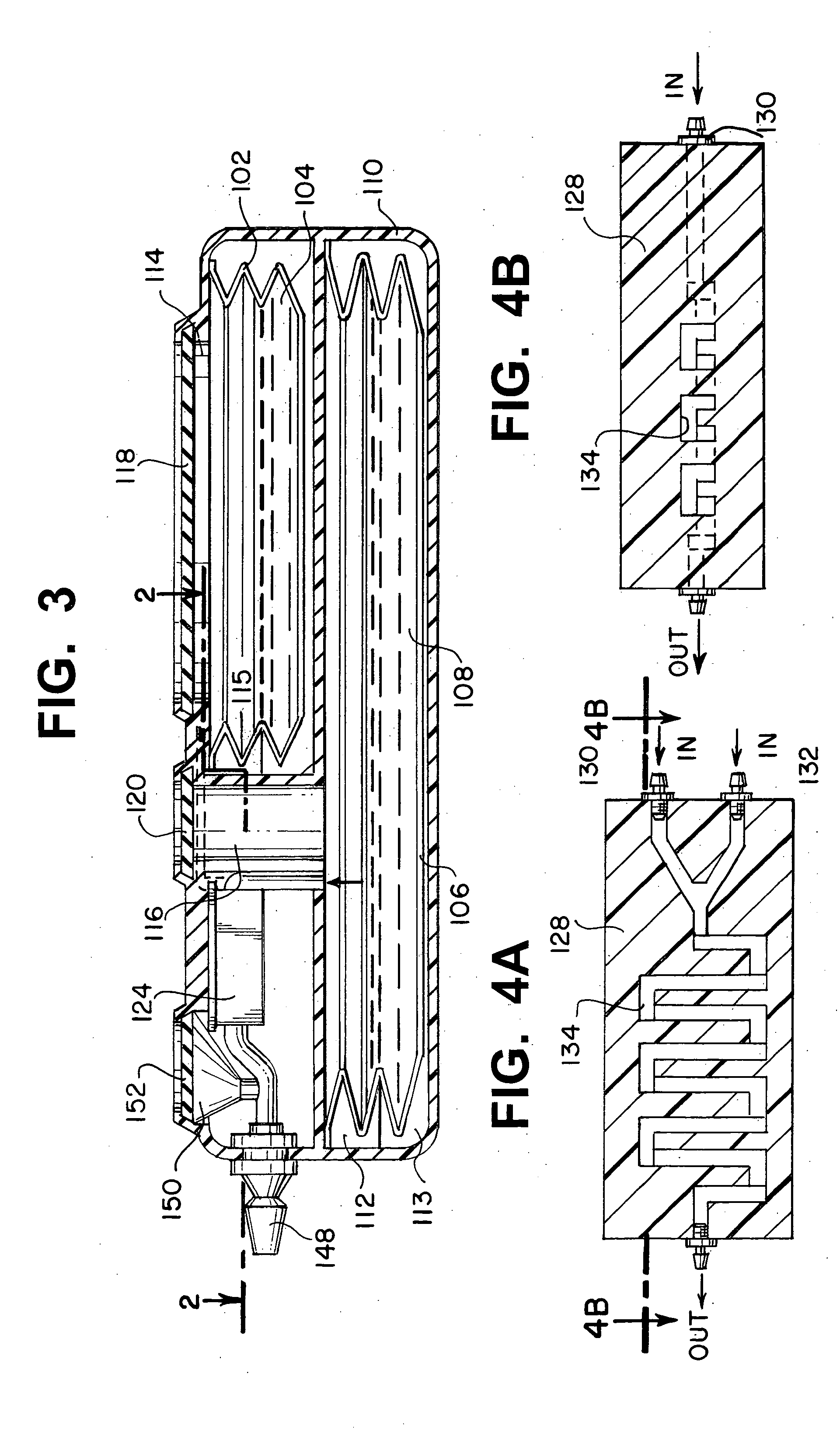Two-compartment reduced volume infusion pump
- Summary
- Abstract
- Description
- Claims
- Application Information
AI Technical Summary
Benefits of technology
Problems solved by technology
Method used
Image
Examples
Embodiment Construction
[0026] Referring now to FIGS. 1 and 2, an implantable infusion apparatus 100 in accordance with the present invention is illustrated. FIG. 2 illustrates a medication reservoir 102 for storing a medication 104 and a carrier reservoir 106 for storing a carrier 108. The entire apparatus, including both reservoirs, is typically located in a housing 110. Housing 110 can be made of stainless steel, titanium, or any other strong corrosion-resistant, biocompatible material. The reservoirs are typically in the form of a bellows 112 (FIG. 3) that expands and contracts with the discharge and replenishment of the liquid inside. FIG. 1 illustrates that medication reservoir 102 and carrier reservoir 106 are accessed through a medication access port 114 and a carrier access port 116, respectively. Access ports 114, 116 are covered with a medication compound septum 118 and a carrier compound septum 120, respectively. Both compound septa 118, 120 are formed from elastomeric, needle-penetrable, self-...
PUM
 Login to View More
Login to View More Abstract
Description
Claims
Application Information
 Login to View More
Login to View More - R&D
- Intellectual Property
- Life Sciences
- Materials
- Tech Scout
- Unparalleled Data Quality
- Higher Quality Content
- 60% Fewer Hallucinations
Browse by: Latest US Patents, China's latest patents, Technical Efficacy Thesaurus, Application Domain, Technology Topic, Popular Technical Reports.
© 2025 PatSnap. All rights reserved.Legal|Privacy policy|Modern Slavery Act Transparency Statement|Sitemap|About US| Contact US: help@patsnap.com



